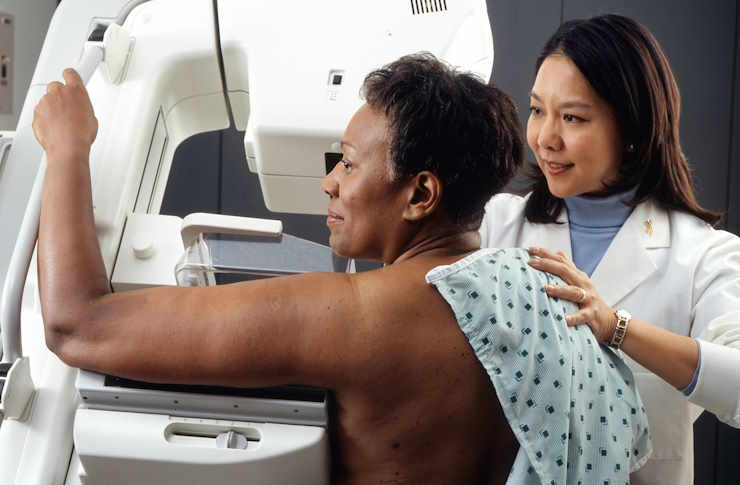Understanding Triple-Negative Breast Cancer — What Every Woman Should Know
Triple-negative breast cancer (TNBC) is a rare and aggressive form of breast cancer that behaves differently from other types in terms of growth and treatment response. Many women may not fully understand what sets it apart or why early detection can be more difficult. Knowing its key features and treatment approaches can help women take proactive steps for their health.

Triple-negative breast cancer affects thousands of women annually, disproportionately impacting younger women, African American women, and those with BRCA1 gene mutations. While the diagnosis can feel overwhelming, understanding the condition empowers patients and their families to make informed decisions about treatment and care.
What Is Triple-Negative Breast Cancer?
Triple-negative breast cancer gets its name from what it lacks rather than what it contains. This cancer type tests negative for three key proteins that typically fuel breast cancer growth: estrogen receptors, progesterone receptors, and human epidermal growth factor receptor 2 (HER2). Without these receptors, the cancer cells cannot be targeted by hormone-blocking medications or HER2-targeted therapies that prove effective for other breast cancer types.
TNBC accounts for 10-20% of all breast cancer cases but tends to be more aggressive than hormone-positive breast cancers. The absence of these receptors means the cancer cells grow and spread more rapidly, often requiring immediate and intensive treatment approaches.
Recognizing Signs and Symptoms
The symptoms of triple-negative breast cancer mirror those of other breast cancer types, making early detection crucial for optimal outcomes. Women should watch for lumps or masses in the breast or underarm area, changes in breast size or shape, skin dimpling or puckering, nipple discharge, and breast pain or tenderness.
TNBC often presents as a palpable mass that feels firm or hard to the touch. Unlike some hormone-positive cancers that may grow slowly, TNBC can develop rapidly between routine screenings. This characteristic emphasizes the importance of monthly self-examinations and adherence to recommended mammography schedules.
Younger women, particularly those under 40, should pay special attention to breast changes, as TNBC occurs more frequently in this age group compared to other breast cancer subtypes.
How TNBC Differs From Other Breast Cancers
The primary distinction between TNBC and other breast cancers lies in treatment responsiveness and prognosis patterns. Hormone-positive breast cancers can be treated with hormone-blocking therapies like tamoxifen or aromatase inhibitors, while HER2-positive cancers respond to targeted treatments such as trastuzumab.
TNBC’s aggressive nature means it tends to grow faster and spread earlier than hormone-positive cancers. However, it also responds well to chemotherapy, particularly when caught in earlier stages. The five-year survival rate for early-stage TNBC approaches that of other breast cancer types when treated promptly and appropriately.
Genetic factors play a larger role in TNBC development. Women with BRCA1 mutations have a significantly higher risk of developing triple-negative breast cancer, making genetic counseling and testing important considerations for those with family histories of breast or ovarian cancer.
Treatment Options
Chemotherapy serves as the cornerstone of TNBC treatment, often administered before surgery (neoadjuvant therapy) to shrink tumors or after surgery (adjuvant therapy) to eliminate remaining cancer cells. Common chemotherapy regimens include combinations of anthracyclines, taxanes, and platinum-based drugs.
Surgical options depend on tumor size, location, and patient preferences. Lumpectomy with radiation therapy or mastectomy may be recommended based on individual circumstances. Sentinel lymph node biopsy helps determine cancer spread and guides additional treatment decisions.
Radiation therapy typically follows breast-conserving surgery and may be recommended after mastectomy in certain cases. Newer treatment approaches include immunotherapy drugs like pembrolizumab, which has shown promise in treating certain TNBC cases, particularly those with high levels of PD-L1 protein expression.
| Treatment Type | Provider Examples | Estimated Cost Range |
|---|---|---|
| Chemotherapy (per cycle) | Mayo Clinic, MD Anderson, Memorial Sloan Kettering | $3,000 - $15,000 |
| Surgery (lumpectomy) | Johns Hopkins, Cleveland Clinic, Brigham and Women’s | $15,000 - $25,000 |
| Mastectomy | Dana-Farber, UCSF, Northwestern Medicine | $20,000 - $35,000 |
| Radiation Therapy (full course) | Cancer Treatment Centers, local oncology centers | $10,000 - $30,000 |
| Immunotherapy (per treatment) | Major cancer centers, specialized oncology practices | $8,000 - $20,000 |
Prices, rates, or cost estimates mentioned in this article are based on the latest available information but may change over time. Independent research is advised before making financial decisions.
Clinical trials offer access to experimental treatments and cutting-edge therapies. Many major cancer centers conduct TNBC-specific research studies, providing patients with opportunities to receive innovative treatments while contributing to medical advancement.
The treatment landscape for triple-negative breast cancer continues evolving rapidly. Recent developments include antibody-drug conjugates, PARP inhibitors for BRCA-positive cases, and combination immunotherapy approaches. These advances offer hope for improved outcomes and quality of life for TNBC patients.
Support services play a crucial role in TNBC treatment. Oncology social workers, nutritionists, and support groups help patients navigate the physical and emotional challenges of cancer treatment. Many hospitals and cancer centers offer comprehensive support programs specifically designed for breast cancer patients.
While triple-negative breast cancer presents unique challenges, early detection and prompt treatment significantly improve outcomes. Women should maintain regular screening schedules, perform monthly self-examinations, and consult healthcare providers about any concerning breast changes. With continued research and advancing treatment options, the outlook for TNBC patients continues to improve.
This article is for informational purposes only and should not be considered medical advice. Please consult a qualified healthcare professional for personalized guidance and treatment.




